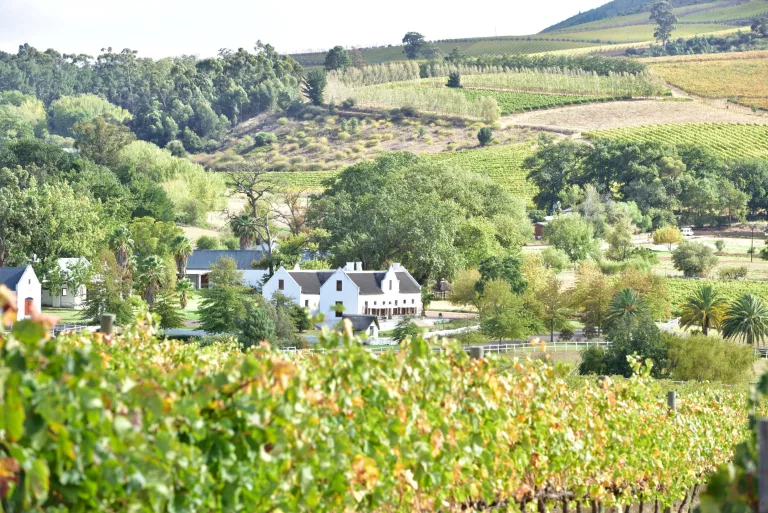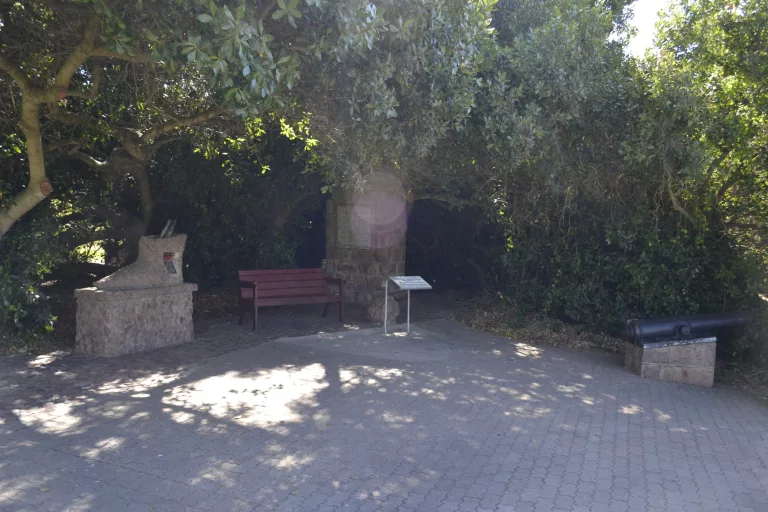Colonial towns in South Africa were shaped by Dutch, British, and French settlers — with architecture influenced by European styles, adapted to local materials and climates.
What survives today are some of the most photogenic and historically significant towns in the country, often with intact Cape Dutch buildings, Georgian townhouses, mission stations, and creaking Victorian-era shopfronts.
But their value goes beyond aesthetics. These towns are living museums — layered with indigenous histories, mission legacies, frontier tales, and ongoing cultural life.
Graaff-Reinet: The Karoo’s crown jewel
Dutch Reformed Church, Graaff Reinet/Leo za1/Wikimedia Commons
Often called the “Gem of the Karoo,” Graaff-Reinet is home to more national monuments than any other town in South Africa — over 220, to be exact. Founded in 1786, it retains a unique blend of Cape Dutch and Victorian architecture, much of it immaculately preserved.
Stroll through the horseshoe-shaped town centre and you’ll pass the majestic Dutch Reformed Church (a Gothic Revival masterpiece), stoep-lined houses with hand-carved shutters, and museums that bring frontier history to life. The town also lies on the edge of the Camdeboo National Park, with the Valley of Desolation offering dramatic views just 14km away.
Don’t miss:
- Reinet House Museum
- The Obesa Nursery
- A sunset drive to the Valley of Desolation
Stellenbosch: South Africa’s storybook wine town

Stellenbosch Wine Route/South African Tourism from South Africa/Wikimedia Commons
More than just the heart of the Cape Winelands, Stellenbosch is a masterclass in Cape Dutch preservation. Founded in 1679, it’s South Africa’s second-oldest town — and arguably its best preserved.
Its whitewashed gables, thatched roofs, and oak-lined avenues are postcard-perfect. But there’s more than wine and beauty here. Stellenbosch has long been a cultural hub, with galleries, museums, and architecture telling layered stories of both colonial settlement and indigenous displacement.
Don’t miss:
- The Village Museum (with restored period houses from the 18th and 19th centuries)
- A walking tour of Dorp Street
- Wine tasting at a historical estate like Spier or Lanzerac
Clanwilliam: Heritage in the heart of the Cederberg

Clanwilliam/Heribert Bechen, 5 million visits – many thanks!/Wikimedia Commons
Clanwilliam sits quietly beneath the Cederberg mountains — a small town with deep roots and beautifully preserved Cape Dutch and Victorian buildings. Founded in the early 1800s, it’s home to South Africa’s oldest church still in use, and the iconic Old Gaol, now a museum and coffee shop.
The town also tells a deeper story: it was a mission town central to early evangelism and education efforts, especially for the descendants of the Khoisan people. Today, it’s a base for exploring ancient rock art, rooibos farms, and wilderness trails.
Don’t miss:
- The Old Gaol Museum
- Rooibos Route farm tours
- Rock art at the Sevilla Trail
Paarl: Language, Wine and monumental views

View from Paarl Mountain/Karen Pagel/Wikimedia Commons
Paarl is often overshadowed by its wine-famous neighbours, but history lovers know better. The town has a wealth of 18th-century homesteads, historical churches, and monumental stories—including the role it played in the birth of Afrikaans as a written language.
The town’s crowning feature is the Afrikaans Language Monument, set on a hilltop with sweeping views over the Berg River Valley. Its Main Street is one of the longest in the country, dotted with wine estates, boutiques, and period architecture.
Don’t miss:
- Afrikaans Language Monument & Museum
- Nederburg Heritage Wine Tasting
- A historical Main Street walking tour
Mossel Bay, Western Cape: Maritime legacy in a colonial port

Post office tree area, Bartholomeu Dias Museum Complex/PHParsons/Wikimedia Commons
Although now a bustling holiday hub on the Garden Route, Mossel Bay has preserved its maritime and colonial roots impressively well. It was here, in 1488, that Bartolomeu Dias first made landfall — and the town’s long-standing relationship with explorers, missionaries, and traders lives on in its museums and architecture.
The Bartolomeu Dias Museum Complex includes a replica of his caravel, the famous Post Office Tree, and a 19th-century granary. Venture further and you’ll find Victorian-era cottages and a working harbour that blends the past with the present.
Don’t miss:
- The Dias Museum Complex
- Historical walking route from Market Street
- Stay in a heritage guesthouse like The Edward Charles Manor
Planning your time-travel escape
Best time to visit:
Spring (Sept–Nov) and Autumn (March–May) offer mild weather and fewer crowds.
Travel tip:
Rent a car for maximum flexibility — these towns are best explored slowly and often linked via scenic drives (like Route 62 or the N9 Heritage Route).
Where to stay:
Look for restored manors, old schoolhouses-turned-B&Bs, or historical inns that let you sleep inside a story.
Follow us on social media for more travel news, inspiration, and guides. You can also tag us to be featured.
TikTok | Instagram | Facebook | Twitter
ALSO READ: 7 cultural sites to put on your map

